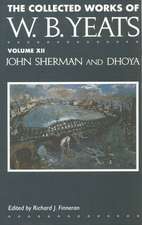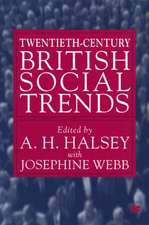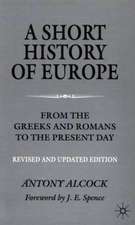The Golden and Ghoulish Age of the Gibbet in Britain: Palgrave Historical Studies in the Criminal Corpse and its Afterlife
Autor Sarah Tarlowen Limba Engleză Hardback – 29 dec 2015
This book is open access under a CC BY 4.0 licence.
| Toate formatele și edițiile | Preț | Express |
|---|---|---|
| Paperback (1) | 210.53 lei 6-8 săpt. | |
| Palgrave Macmillan UK – 11 dec 2018 | 210.53 lei 6-8 săpt. | |
| Hardback (1) | 216.55 lei 6-8 săpt. | |
| Palgrave Macmillan UK – 29 dec 2015 | 216.55 lei 6-8 săpt. |
Din seria Palgrave Historical Studies in the Criminal Corpse and its Afterlife
-
 Preț: 232.23 lei
Preț: 232.23 lei -
 Preț: 219.39 lei
Preț: 219.39 lei -
 Preț: 172.02 lei
Preț: 172.02 lei -
 Preț: 225.04 lei
Preț: 225.04 lei -
 Preț: 222.03 lei
Preț: 222.03 lei - 15%
 Preț: 578.24 lei
Preț: 578.24 lei -
 Preț: 213.57 lei
Preț: 213.57 lei -
 Preț: 214.32 lei
Preț: 214.32 lei
Preț: 216.55 lei
Nou
Puncte Express: 325
Preț estimativ în valută:
41.46€ • 43.09$ • 34.37£
41.46€ • 43.09$ • 34.37£
Carte tipărită la comandă
Livrare economică 05-19 februarie 25
Preluare comenzi: 021 569.72.76
Specificații
ISBN-13: 9781137600882
ISBN-10: 1137600888
Pagini: 112
Ilustrații: XIII, 155 p. 24 illus.
Dimensiuni: 148 x 210 mm
Greutate: 0.36 kg
Ediția:1st ed. 2017
Editura: Palgrave Macmillan UK
Colecția Palgrave Macmillan
Seria Palgrave Historical Studies in the Criminal Corpse and its Afterlife
Locul publicării:London, United Kingdom
ISBN-10: 1137600888
Pagini: 112
Ilustrații: XIII, 155 p. 24 illus.
Dimensiuni: 148 x 210 mm
Greutate: 0.36 kg
Ediția:1st ed. 2017
Editura: Palgrave Macmillan UK
Colecția Palgrave Macmillan
Seria Palgrave Historical Studies in the Criminal Corpse and its Afterlife
Locul publicării:London, United Kingdom
Cuprins
Chapter 1: Some Further Terror and Peculiar Mark of Infamy.- Chapter 2: How to Hang in Chains: how, where and when eighteenth-century sheriffs organised a gibbeting.- Chapter 3: The Afterlife of the Gibbet.- Chapter 4: Conclusions: Why Gibbet Anyone?.- Appendix 1: All Cases of Hanging in Chains 1700-1832.- Appendix 2: Maps, 1752-1834.- Index.
Notă biografică
Sarah Tarlow is Professor of Historical Archaeology at the University of Leicester, UK. Before coming to Leicester in 2000 she taught at the University of Wales Lampeter, UK, and has published extensively on the archaeology of death and burial, archaeological theory and on post-medieval archaeology.
Textul de pe ultima copertă
This book is open access under a CC BY 4.0 licence.
Caracteristici
Provides the first extensive examination of 'gibbetting', or ‘hanging in chains’ since the nineteenth century Explores the processes, technologies and macro-geographies involved in gibbeting Assesses what the practice tells us about attitudes to bodies, the dead, and to criminals in the eighteenth and nineteenth centuries Includes supplementary material: sn.pub/extras
















